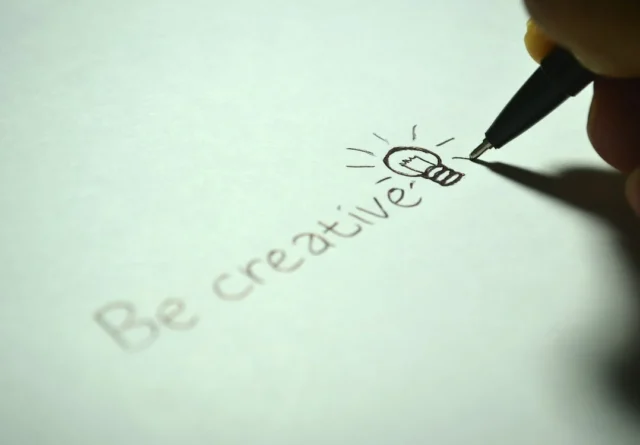
You’ve got the experience, the skills, and the potential to be a great employee—but if you can’t snag an interview, your resume is going to stay stuck on that pile of “Who Cares.”
But don’t worry! We’re going to show you what it takes to make your resume stand out from the crowd.
1. Formatting

The first thing you want to do is make your resume easy to read. Avoid things like columns, tiny types, and a cluttered appearance.
A resume’s formatting is extremely important because you only have an average of 30 seconds to get an employer’s attention. This is important because no matter what the economy is doing, everybody needs employees.
You are going against hundreds or even thousands of other applicants who probably have similar backgrounds as you do.
Also, the person who is reviewing resumes probably looks at a lot of them each day. They may have a concise amount of time to look over each resume and probably pick one or two to actually read in more detail. This means that you need to make your resume stand out.
To make your resume stand out, you must have a clear and concise format that doesn’t require any effort on the reader’s part to understand and absorb what information is being conveyed to them.
2. Sentence Structure

Using clear and concise sentence structure is crucial to your chances of getting an interview. The way you format the information on your resume can make or break it.
While many people go about using a wild format to make their lives easier, you must take the time to actually structure the information in a way that makes it easy for the employer to read and understand.
Many people write sentences with primary and subordinate clauses (or sentence fragments), which can be hard for other people to read or understand.
Also, many people make the mistake of using too many prepositional phrases, which get in the way of a clear and concise sentence structure.
A great example:
Like all students, Jennifer Jones likes reading books on her iPad.
The modified version would be:
Jennifer Jones likes reading books on her iPad.
The job requires Jennifer to work with groups of people at any time of day or night. Jennifer Jones likes working with groups of people at any time of day or night.
A massive amount of prepositions and prepositional phrases get in the way of easy sentence structure, detracting from an effective resume.
Don’t be afraid to remove the words you don’t need. It’s much better to lose a few words than have your employer choose to never even take the time to read your resume.
3. Formatting Your Content

Overall, there are two things you have to remember when formatting your resume:
* Clear and concise sentence structure, and
* Organize your narrative in an easy-to-read format.
- Use a clear and concise sentence structure.
- Organize your information in a way that is easy to read.
It’s okay to use bullet points or other design elements, but make sure it is clear and concise. You want an employer to be able to take one look at your resume and say, “Yes, I want to meet this person.”
The same goes for the content on your resume: It’s okay to use bullet points or bolded headings, but don’t overdo it. You want the employer to read the content on your resume in less than 30 seconds. You want to grab their attention with a list of bullet points. Don’t make the employer take over seven minutes looking at your resume.
4. Choosing the Right Words

About 8,000 new words are added to the English language each year. While some of these new words are useful in certain situations, too many other words are unnecessary and even distracting.
Words like “the,” “although,” or “because” get in the way of an effective sentence structure and make it harder for the employer to read.
The first thing you have to do when choosing your words is to determine which ones truly matter. For example, imagine you have two sentences:
* I was an outstanding college student. I got some great grades.
* I was a great college student. I received an A in every class I’ve ever taken.
Did you see the difference? The first is simply stating that you were a “good” student, and in the second sentence, it’s saying something about your performance that shows how good you were as a student.
5. Choosing the Right Fonts and Colors

The first rule is, “Don’t use more than one font!” One is enough. A resume is about the content, not the formatting. The most important thing on your resume is the content itself.
The second rule is “Don’t use fancy colors or fonts.” Most employers will not be able to read the fonts you choose and will likely just ignore them.
The third rule is “Do not highlight information. The employer is only interested in what you have done, not how the information is presented. They aren’t going to read your resume with a ribbon on every line.
Most online applications are pretty forgiving when it comes to color. However, some do not accept bold or large fonts. If you’re using an online application, it might be a good idea to test your resume before uploading it so that you’re sure it will be viewable by the employer’s review staff.
To test your resume, follow these steps:
* Open the document in a Word processing program that you use. For example, if you use Microsoft Word, open it in Word. If you use Google Docs to write your resume, open it in Google Docs.
* View the file using all of the different options for size and color. Make sure everything can be read clearly and that all formatting is displayed correctly.
6. Creating a Visual Image
Your resume should be a visual image. The layout should be logical and easy to read. This also helps to make sure you don’t have too many different typefaces. If you have a lot of information, try using sub-headings.
As far as spacing goes, use lots of white space and leave at least one-inch margins on all sides of the page.
Resume Example:
The following is an example that shows how your resume should look in a visual format:
- Name
- Type of Resume (i.e., CV)
- Personal Information (language, citizenship, etc.)
- Work Experience
- Education
- Skills and Interests
- References Contact Information
This document can be easily read by separating it into sections with headings that are either bold or all capital letters on the page where the heading appears in normal text size and font size.
Having too many individual sentence lengths in a resume can be very distracting and will make it more difficult for the employer to read.
7. Proofreading

The last thing you need to do is proofread your resume for any spelling or grammatical errors. If an employer does not see these errors, they may question whether you are actually a good candidate for the position.
Have someone you know will not automatically say “yes” to you read your resume for typos and grammatical errors before sending it to employers. If they find any, have them send it back and edit it Further.
Resumes are a crucial factor in the hiring process. If you master the art of resume writing, your chances of success in getting interviews will increase. Use bullet points to make it easy for an employer to read your resume, and don’t be afraid to add sub-headings to separate your resume’s different sections.
Keep your resume short and sweet!
When I put my resume together, I want employers to glance at it quickly and see right away that this is a great candidate for their position.







